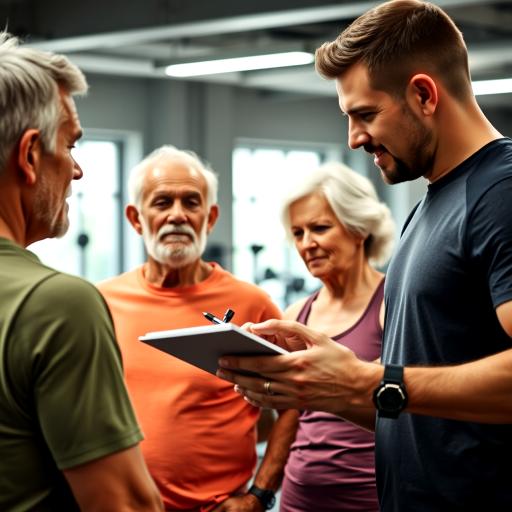Back Pain? Hip Pain? Shoulder Pain? Neck Pain?
The critical importance of strengthening stabilizer muscles and how they affect or even cure these issues

Stabilizer muscles play a key role in preventing and managing back pain, a common issue for many people. These deep, often smaller muscles, including the transverse abdominis and multifidus, provide critical support to the spine and maintain proper posture. When these muscles are weak or not functioning correctly, the body shifts the burden to larger muscle groups, leading to strain and discomfort in the lower back. Strengthening stabilizer muscles through exercises like planks, bird-dogs, and bridges can enhance spinal stability, reducing the likelihood of back pain. By keeping these core stabilizers strong, you can support a healthy spine, improve mobility, and alleviate existing back discomfort.
Enhancing Balance and Agility
Stabilizer muscles, often overlooked in many workout routines, are essential for maintaining balance, agility, and strength. These muscles work with major muscle groups, offering support and stability during movement. Understanding how stabilizers function and including exercises to strengthen them can significantly improve fitness levels and health, particularly as we get older.
Key Stabilizer Muscles
Stabilizer muscles are generally smaller and located deeper within the body. They collaborate with larger muscles, providing necessary support during various movements. Some of the primary stabilizer muscles include the transverse abdominis, multifidus, rotator cuff muscles, and the pelvic floor muscles.
The Transverse Abdominis
The transverse abdominis, sometimes known as the body's natural weightlifting belt, is the deepest layer of the abdominal muscles. It encircles the spine, offering stability and support to the lower back. This muscle is crucial for good posture and is active during almost all forms of physical activity.
The Multifidus Muscle
Running along the spine, the multifidus muscle maintains spinal stability. It works closely with the transverse abdominis to support the lower back during movement. Building strength in the multifidus can help prevent lower back pain, a common problem as we age.
The Rotator Cuff
The rotator cuff consists of four muscles that stabilize the shoulder joint. These muscles allow for a wide range of arm movements while keeping the shoulder stable. A weak rotator cuff increases the risk of shoulder pain and injury.
Pelvic Floor Muscles
The pelvic floor muscles support the organs within the pelvis, such as the bladder, uterus or prostate, and rectum. Strong pelvic floor muscles are vital for bladder and bowel control, sexual function, and overall stability and balance.
Importance of Strong Stabilizer Muscles
Having strong stabilizer muscles is crucial for balance and agility. They provide a solid base for movement, making daily activities easier and more efficient. Weak stabilizer muscles force the body to overuse larger muscles, leading to strain and potential injury.
Aging and Muscle Strength
Muscle strength naturally declines with age, increasing the risk of falls and injuries. However, regular strength training, especially exercises targeting stabilizer muscles, can counter this decline. Exercises such as planks, bridges, and balance activities strengthen stabilizers, improving balance and agility.
Diet and Muscle Health
In addition to exercise, a balanced, whole-foods diet supports muscle health. Protein-rich foods like lean meats, fish, eggs, and legumes provide essential nutrients for muscle growth and repair. Fruits and vegetables, high in antioxidants, help reduce inflammation and promote overall muscle health.
---
Listen, not all Physical Trainers are the same. Most are pretty good at building strength and muscle. But Master Fitness Trainer Kenny has a much deeper approach. When you're ready to really get serious about health above appearance, give Kenny a shot for 60 days in your home or in the gym. Kenny trains in person at Crunch Fitness in East Cobb, Marietta GA. To get on the waiting list, email kenny@tacticalfwn.com - to sign up now and get more information, simply click the create account link on the login page.
Updated: August 13, 2025 10:19
Category: Wellness
Keywords: muscles stabilizers
References
"Effects of core stabilization exercise and strengthening exercise on proprioception, balance, muscle thickness and pain related outcomes in patients with subacute nonspecific low back pain: a randomized controlled trial." Hlaing SS, Puntumetakul R, Khine EE, Boucaut R. BMC Musculoskelet Disord. 2021 Nov 30;22(1):998. doi: 10.1186/s12891-021-04858-6. PMID: 34847915; PMCID: PMC8630919. https://pubmed.ncbi.nlm.nih.gov/34847915/
"Stabilizer Muscles: Key To Injury Prevention & Optimal Function" Staff, Balanced Physical Therapy. March 10, 2024. https://balancedptmi.com/stabilizer-muscles-key-to-injury-prevention/
"Three reasons stability training benefits your strength training" Staff, Stretch Affect. August 30, 2022. https://www.stretchaffect.com/blog/stability-training-benefits
Comments
You must log in to post a comment.